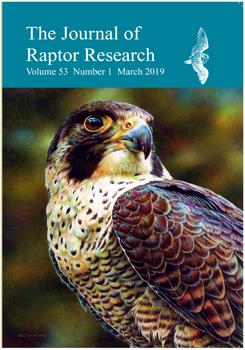We studied Northern Hawk Owls in Montana from 1994 through 2015. We report 36 breeding records, 18 of which included a known nest location. Owls reused one nest in subsequent years, but this nest was included only once in our analysis of nest-site characteristics. All nests were in moderate to severely burned forests from 1–11 yr post-burn. Nests were found in black cottonwood (Populus trichocarpa; n = 6), quaking aspen (P. tremuloides; n = 6), Engelmann's spruce (Picea engelmannii; n = 3), and western larch (Larix occidentalis; n = 2). Average nest tree height was 19.6 ± 3.4 m (95% CI, n = 17), average nest height was 14.1 ± 1.6 m (95% CI, n = 17), and average diameter at breast height was 43 ± 4 cm (95% CI, n = 17). Average measurements of nest tree height and nest height were larger than those reported from elsewhere in North America. Diet, based on 274 prey identified from pellets, was 88% voles, most frequently Microtus pennsylvanicus (51%, n = 140). Only 1 of 72 banded owls was recaptured or recovered over the course of this 22-yr study, suggesting a non-sedentary or nomadic population with low site fidelity. The lone recapture represents the first report of a philopatric Northern Hawk Owl in North America. Although this owl is still considered a rare breeder in the conterminous United States, we documented breeding records in 11 of the last 12 yr of this study. All but four known breeding records in Montana occurred within Glacier National Park.
How to translate text using browser tools
25 February 2019
The Northern Hawk Owl in Montana: A Summary of Breeding Biology, Diet, Habitat Association, and Records (1994–2015)
Matt D. Larson,
Jessica C. Larson,
Denver W. Holt,
Steve Gniadek,
Adam Eckert
ACCESS THE FULL ARTICLE

Journal of Raptor Research
Vol. 53 • No. 1
February 2019
Vol. 53 • No. 1
February 2019
breeding biology
diet
food habits
forest fire
Montana
nest-site characteristics
Northern Hawk Owl




